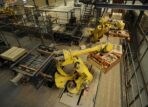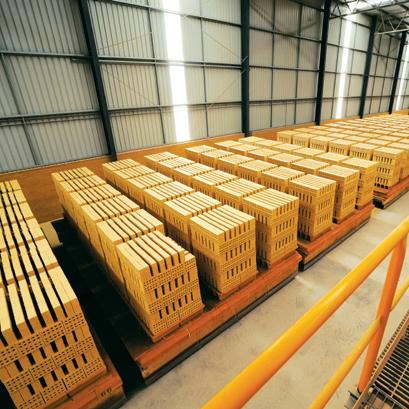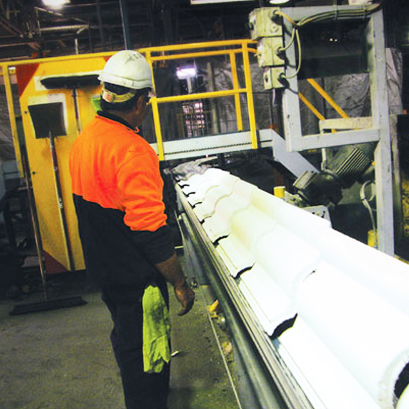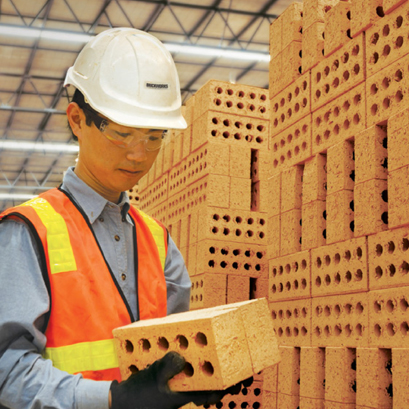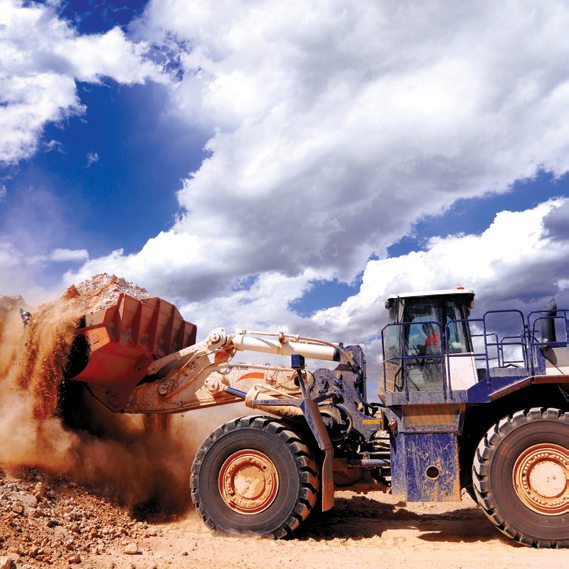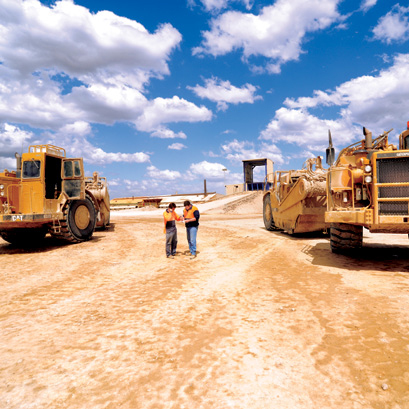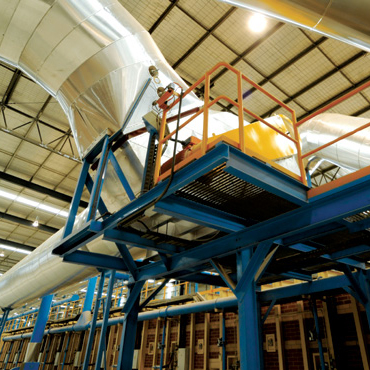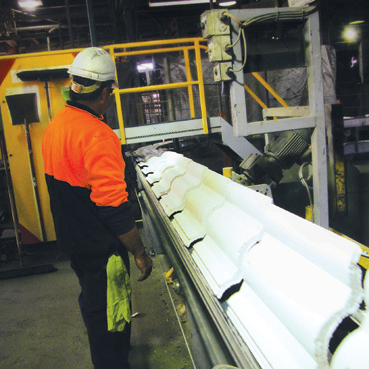We are what we create — what we build. So we strive to refine, improve and design better ways of manufacturing brick and all our building products for sustainable building. Products that stand the test of time and daily living.
-
Wollert
For the past two years, the Austral Bricks Wollert West brick and paving plant has been rolling out bricks more efficiently than any other plant in Australia.
Adjoining the Wollert East plant which has been in operation since 2006, the combined plants have exceeded design specifications, reducing waste, cost, energy use and emissions over conventional brick plants.
The Austral Bricks factory is one of the largest, most modern and efficient brick plants, supported by massive onsite reserves of shale. It operates 24/7, with a small number of staff per shift helped by robots to produce 170 million bricks per year. This works out to enough bricks to build more than 24,000 typical Melbourne homes. Careful planning and technological advances mean the operation of the brick plant has a low impact on the environment. The kiln is fuelled by natural gas and the plant uses about one third less fuel than our previous Victorian plants.
Electricity consumption is also significantly reduced, due to the replacement of large hydraulic power-packs with highly efficient variable frequency electric drives, which use only the power required to do the job. This also eliminates the use of hydraulic oil and the need to safely dispose of hundreds of litres of oil per year.
Water management is a priority too, and the site has been self-sufficient in water for many years. Runoff water is captured from roofs and in quarries and stored in deep reservoirs on the site. The water is reused in the brick making process.
Together, these innovations deliver a double return: a more efficient and profitable plant for Austral Bricks, and a cleaner environment for all Australians.
-
New brick plant is a world leader in resource efficiency
A $44 million investment in Victoria is now returning great benefits for the environment and local home builders.
Thanks to smart technology and thoughtful planning, the new Austral Bricks plant at Wollert promises to be one of the most resource efficient of its kind in the world. “We are investing in the Company’s future prosperity and the future of the environment for all Australians,” Brickworks MD Lindsay Partridge said when the project began in 2006.
The plant now produces enough low cost, premium quality bricks for more than 12,000 typical Melbourne homes. It’s been built close to current and future clay and shale reserves in nearby open quarries, and almost all minerals extracted are useable in construction. It’s also situated within coo’ee of Melbourne’s new developments, reducing the haulage footprint of the brick products.
A careful combination of scale, automation, efficient design, 24/7 operation and using variable-speed electric drives (in place of hydraulic or pneumatic drives) means that electricity consumed is one third less than that of a comparable conventional plant. The kilns also use less gas, and their heat is the only energy needed to dry the new bricks.
Working in tandem with less energy consumption, a state-of-the-art granulated limestone scrubber on the kiln stack reduces greenhouse gas emissions to well below legal limits. Water used in the brick making process is all harvested on site and stored in deep reservoirs.
Production waste is returned to the mix, while post-production waste is collected and crushed for return. Even worn machine parts are sent for recycling. Once finished and checked for quality, brick packs are simply polyester strapped for transport to building sites, eliminating the need for full plastic shrink-wrapping and timber pallets.
Like the best stories, this one has a very happy ending. After the quarries around the Wollert plant have been mined, they will be clean filled, before being replanted with an ‘eco-system’ of native grasses and trees.
For enquiries regarding our sustainability policies or initiatives please contact us on 02 98307800.
-
Size does matter
Manufacturing is all about big quantities, big spaces and big trucks. Brickworks balances the scales by making significant reductions in energy use, waste and emissions. Making their impact on the environment that much smaller.
Bricks are heavy, so Brickworks manufacturing facilities are in close proximity to its quarries, reducing the distance travelled by the clay. Clay and shale extraction generally doesn’t require the removal of other materials, so Brickworks’ production waste is already minimal; made even more so by reusing almost everything from paper to steel. Even faulty bricks don’t go to waste – instead, they’re crushed, and the clay is returned to the mix.
Kilns use natural gas as it produces fewer greenhouse gases. Brickworks reuses heat from kiln firing to help dry out newly-formed bricks, and keep firing time down.
Emissions have been reduced by installing devices such as scrubbers to remove potential pollutants before they are released.
Only relatively small amounts of water are used to make bricks. Nevertheless, rainwater collection and storage is built into a number of the sites, making them largely or wholly self-sufficient in this precious natural resource.
Some Brickworks plants work 24 hours a day to maximise off-peak electricity savings.
We reduced our electricity by the replacement of large hydraulic power-pack controls with highly efficient variable-frequency electric drives.For enquiries regarding our sustainability policies or initiatives please contact us on 02 98307800.
-
Breaking new ground with brick
Austral Bricks, in conjunction with Think Brick Australia, has developed a reputation for its involvement in a number of groundbreaking research projects.
One such project, run in partnership with The University of Newcastle and the Australian Research Council, measures the thermal performance of different construction types and materials.
Increased emphasis is now placed on the thermal performance of buildings, with energy rating systems for housing now in place. It’s long been understood that brick incorporated into a building design improves the building’s inherent ‘thermal mass’ – absorbing heat during the day and releasing it slowly overnight, reducing the need for active heating and cooling systems. This makes the interior environment a much more pleasant and energy efficient place to be.
Incorporating thermal mass into the floor, walls and/or ceilings, minimise extremes of heat and cold. Daytime heat is absorbed, keeping the interior cooler during the hottest part of the day during the warm months. And in the cooler months, good insulation in the roof and walls together with thermal mass and correct ventilation, help to stabilise internal temperatures and offset overnight energy requirements with ‘free’ passive heating.
Designing a home with north-facing living areas allows winter sun to better penetrate the thermal mass inside the house (such as double clay brick walls and combined with concrete floors) to gain and store warmth for release during cold nights.
Building in clay brick is an easy way to build thermal mass into your home, helping you to save on electricity and give something back to the earth.
© copyright 2024, Brickworks Limited.

